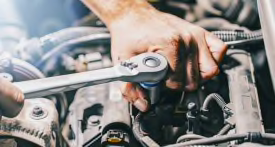How to Use Your Gas Grill Like a Range
Keep your kitchen cool by transforming your grill into an outdoor stove with these expert techniques
When you shop through retailer links on our site, we may earn affiliate commissions. 100% of the fees we collect are used to support our nonprofit mission. Learn more.

In the sweltering summer heat, the last thing you want to do at the end of the day is fire up your range to make dinner.
Your stove will not only heat up your kitchen but also force your air conditioning to work harder to cool your space, wasting energy—and money—in the process.
Fortunately, your gas grill can be a secret weapon for warm-weather cooking, and it’s not just for burgers and brats, either. With a few inexpensive accessories and the right technique, you can use your grill like a stove.
Stews, Sauces, Braises, Boiled Veggies, and Beans
Helpful accessories: Dutch oven; soup or sauce pot with oven-safe handles (avoid copper or stainless steel, which can discolor from contact with flames)
How to cook on a grill: Many gas grills have a side burner, and it’s the most obvious replacement for a burner on your stove. Unlike a grill burner, the side burner offers direct contact between the burner and the cookware. Keep in mind that most side burners are less powerful than a burner on your stove, so allow extra time if you’re heating a large pot of water for boiling.
If you don’t have a side burner, you can place a pan directly on the grates of your grill, over a single burner. Because the pan is farther from the heat than it would be on a stove, you still may need to select hotter temperatures than you would otherwise—think medium heat on your grill for the equivalent of a low-heat simmer on the stove. Use cookware with short handles to ensure that your grill lid can still close. For Dutch ovens, consider upgrading a stock plastic lid knob to a metal ovenproof knob.
Eggs, Pancakes, Sautés, and Stir-Fries
Helpful accessories: fry pan, griddle, vegetable grill basket, grill wok
How to cook on a grill: A grill basket or grill wok (a wok-shaped pan with small perforations that allow the flames below to sear the food) is great for small cuts of veggies, like pepper strips or sliced zucchini, and diced meat. Cook them on any burner (but if your grill has a dedicated sear zone, use that spot because it often replicates the high heat of a stove burner set to high). Shake the handle periodically to move food around and ensure even cooking from contact with the flame.
A grill-safe griddle or grill-safe skillet provides a flat surface for cooking eggs, pancakes, or sandwiches, so you won’t have to worry about open grates or flames. You’ll need to tweak the temperature a bit to find the sweet spot, adjusting down if food cooks too fast.
Broiled Steaks and Chops; Seared Fish and Veggies
Helpful accessories: small aluminum sheet pan
How to cook on a grill: Searing on a grill and broiling are two sides of the same coin. Searing on a grill is cooking that uses radiant heat from below, and broiling is cooking that uses radiant heat from above. Either way, use high heat and keep the lid closed to trap the intense heat of the grill.
You can cook steaks, chops, burgers, kebabs, hearty fish (like tuna and swordfish), and whole or large veggies (like eggplant and sweet potato) directly on the grates. Just make sure to oil your grill grates in addition to the food you’re grilling to help prevent food from sticking to the grates.
As for more delicate white fish (like cod or sole) or smaller cuts of produce, use a well-oiled sheet pan, so they don’t fall apart or fall through the grates.
Best Grills for Rangelike Results
Naturally, you’ll get the best rangelike results when you use a gas grill that’s great to start with. The models below offer even heating, broad temperature ranges, and stellar indirect cooking. Plus they boast side burners and shelves, to mirror the experience of cooking on your regular range.
















